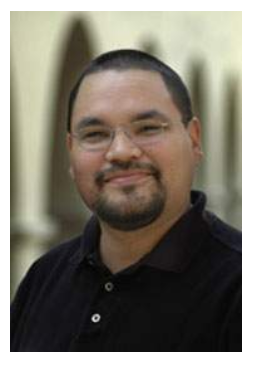To address a centuries-old problem, a Texas State University School of Journalism and Mass Communication faculty member recommends two tools as a remedy: time and effort.
“Who gets to decide what is and what is not truthful?” asked Texas State senior lecturer Gilbert D. Martinez. “If the government decides that only truthful things can be expressed, the fear is that the government will use that to silence people and control information.”
Controlled information can come from non-government sources, as well. Considering that officials representing social media platforms have periodically testified at Congressional hearings, the discussion has expanded to include their role.
“They [social media entities] are not bound like the government,” Martinez said. “They can choose what to regulate. Facebook appears to have taken a backseat. There are concerns that people are being misled. Facebook has allowed certain things but not others. That is not free speech values.”
Whereas stories were once distributed solely by daily newspapers or nightly news broadcasts, the emergence of social media and 24-hour news has created a different dynamic.
“We have always had the October surprise – there is always some kind of bombshell,” Martinez said. “It is just playing out in real time with social media platforms. It’s really about winning hearts and minds. Propaganda is about misleading people. It takes a lot of work to find out what is real and what is not.”
When misinformation is consumed by an individual or a wide audience, the results can be far more damaging than a stained opinion. Edgar Welch, a North Carolina resident, decided in 2016 to drive 350 miles from his home to Washington, D.C. to investigate a conspiracy theory that claimed Hillary Clinton and her campaign chairman, John Podesta, were running a child sex ring out of Comet Ping Pong, a pizzeria. Welch opened fire in the establishment, pleaded guilty to multiple charges and was sentenced to four years in prison in June 2017.
Here are several ways to spot fake news:
- Consider the source by navigating away from the story on a website. What is the website’s mission and contact information?
- Read beyond the headline to absorb the whole story instead of just a headline that could serve as clickbait.
- Examine the author. What are his or her credentials?
- Look at the supporting sources featured in links throughout the story. Does that information support the main story?
- Check the date. An old story can be made “new” by reposting something that might not be relevant to current events.
- Is the news item a joke? If an assertion seems too off the wall, it might be satire. The website and author background information can provide guidance.
- Check your biases. Could your own beliefs be affecting your judgment?
- Ask experts such as an educator or librarian, or consult a fact-checking site.
- “Reading only things you agree with can become a problem,” Martinez said. “It’s good to meet different ideas. We all have certain biases and tend to only read things that make us happy. That is dangerous.”
Diversifying your news sources enables you to find out if a story has been picked up or repeated by multiple sources. Learn to distinguish between news commentary and news. To prevent the spread of fake news, check and verify before you share a news item.
“Sometimes human institutions make mistakes during the day-to-day course of things,” Martinez said. “We have a difficult political discourse. Within the media literacy part, just because you read something on the internet doesn’t mean it’s true. It takes time to do research.”
·The International Federation of Library Associations and Institutions provided material in addition to Gilbert D. Martinez.
Original post https://alertarticles.info
